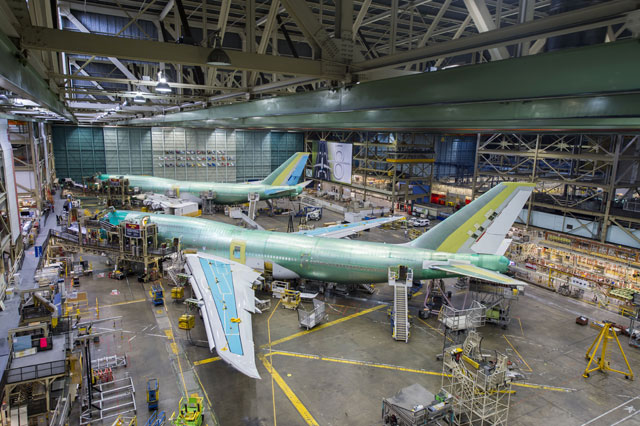A landmark in Boeing’s illustrious, 99-year history passed unnoticed last year, on 20 February, when its shares traded at $158.31. In nearly a century of achievement, Boeing’s market value had never been higher. More ominously, that value was a distinct peak.
Boeing shares have since tumbled 26.3%, a poor performance even by the standards of a difficult year on the stock market; the benchmark S&P Index has lost just 10.8%. Airbus Group has gained 4.9%.
Boeing’s stock performance included a one-day drop of 9% last week, when it published its annual results. Rather than being buoyed by better-than-expected performance in a financially turbulent 2015, investors appear to have been disappointed by a lower-than-expected outlook for 2016.

Boeing
Share price can be a poor reflection of a company’s long-term value, as investors naturally price in short-term expectations, especially when markets are as nervous as they are right now. Indeed, the stock market’s reaction may not account well for Boeing’s substantial upsides. Not least, the commercial orders backlog is seven years long, providing some insulation from the kind of sharp, cyclical changes that have ravaged the civil side of the business so many times in the past.
Moreover, there are signs Boeing has successfully reformed a broken product development system, only recently characterised by the embarrassing delays and breakdowns that dogged the 787-8 and 747-8 programmes. Strangely, Boeing’s share price only increased in value over the period between 2008 and 2013, despite so many high-profile slip-ups.
By contrast, the relatively smooth introduction of the 787-9 and ahead-of-schedule progress on the 737 Max suggest the internal reforms are working, although billion-dollar cost overruns on the US Air Force KC-46 tanker programme raise some doubts.
In the end, Boeing’s commercial business is still only at the beginning of a critical strategic transition that will characterise the next five years. The 787 programme is not yet profitable, and two major cash drivers – the 737NG and 777-300ER – are entering a phase-out period, with their replacements still years away from contributing positively to Boeing’s bottom line.
No matter what the stock market thinks today, the key to Boeing’s long-term finances is its management of these product introductions. With the 737 Max family, KC-46, 787-10 and 777-9 all entering service over the next five years, investors will have ample evidence by which to gauge the company’s true prospects.
Source: Flight International


























